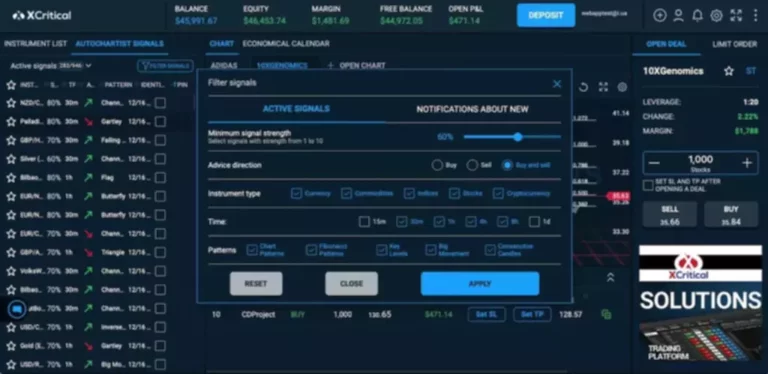Content
No equation is ever the same, meaning that once it is solved, the network knows that the transaction is authentic. Anyway, in this Proof of Work VS Proof of Stake guide, I am going to start by explaining the basics of each model, followed by which popular blockchains have adopted them. The debate on proof of work vs. proof https://www.xcritical.com/ of stake is ongoing and essential to the blockchain and cryptocurrency community. Many multi-chain blockchain solutions meet different communities’ needs by offering the best of both worlds. The selection algorithm under PoS takes into account the amount of staked cryptocurrency and, to maintain fairness, a randomization element.
Disadvantages of the Proof of Stake Model?
And, in order to execute a successful 51% attack on the Bitcoin network would be… Very expensive. Certain Proof-of-Stake (PoS) blockchains address this issue by incorporating procedures that provide smaller stakeholders an opportunity to be selected as validators. One of its main drawbacks is the complexity of proof-of-stake consensus. More regulations are required to avoid potential risks Cryptocurrency exchange such as the nothing-at-stake issue and extensive attacks.
Ways Australian Investors Can Save Money on Crypto Tax
- PoS eliminates the need for high-energy-consuming hardware and software by relying on staking rather than mining.
- One of these is Dash, which allows users to send and receive funds in just a couple of seconds.
- I have also listed some of the solutions that the Proof of Stake model brings to the cryptocurrency industry.
- PoS achieves consensus by requiring participants to stake crypto behind the new block they want to be added to a cryptocurrency’s blockchain.
- The more tickets you buy – the more chances you have of becoming the lucky one.
- Staking is a process of locking up a certain amount of your own cryptocurrency in the blockchain.
- Making a secure network where data and transactions are impervious to hacking and alteration is the primary goal of proof-of-work (PoW) technology.
In addition, miners display the duration of their transaction validation. It is important to note that stakers are typically referred to as block validators in blockchains that employ the proof-of-work technique. Making a secure network where data and transactions are impervious to hacking and alteration is the primary goal of proof-of-work (PoW) technology. Specific amounts of Bitcoin are awarded to each mining unit; by preventing double-spending and establishing a safe, trustless network, PoW guards against fraudulent attackers. If you’ve done the research, understand the risks, and have decided crypto is right for you, note eth proof of stake that currently, both proof of work and proof of stake coins experience volatility.

Is Ethereum Proof of Work or Stake?
When the block is authenticated by a miner, the digital currency is then added to the blockchain. Cryptocurrency is decentralized and needs to be verified by computers to make the transactions visible. Both proof of work and proof of stake help users perform secure transactions by making it difficult and expensive for bad actors to commit fraud. They make participants prove they have supplied a resource to the blockchain such as energy, computing power or money. Blockchain technology has revolutionized how we think about finance, decentralization, and data security.
Specifically, ‘proofs of work’ are mathematical puzzles that miners compete to solve first. The miner who solves this puzzle first gets to add a list of new transactions, known as a block, to the blockchain. The blockchain network remains secure because it would require a bad actor to take over at least 51% of the network and its computing power. The blockchain can become forked, which means the community changes the blockchain’s protocol and the chain splits into a second blockchain. To prevent duplicate transactions or spending, the history of the original also moves in a new direction.
Critics believe these lower barriers can make proof of stake systems easier to manipulate. For example, the Bitcoin network (proof of work) takes about 10 minutes on average to create a new block on its blockchain, whereas the Ethereum network (proof of stake) currently takes about 12 seconds. Bitcoin’s processing speeds with proof of work could be less practical for everyday use. Advocates argue that this link to real-world resources and constraints helps make it impractical for a single entity to manipulate the system. To manipulate a proof of stake system, one would only need to buy and stake a majority of the available coins—no supply chains or electricity necessary. In this system, holders of the cryptocurrency can choose to “stake” their coins.

This level of control means that these users can prevent transactions from being confirmed by the network. They will also have the ability to spend coins twice and create forks in the blockchain. The way a blockchain network agrees on which transactions are valid is known as the consensus mechanism.
Anyway, let’s find out how the ‘forger’ would attempt to successfully verify the transaction… Finally, I will then explain why I believe Proof of Stake is a much better model than Proof of Work, as well as giving some real-world examples of each model. By downloading this guide, you are also subscribing to the weekly G2 Tea newsletter to receive marketing news and trends. If you’ve heard of Bitcoin, Ethereum, or even Dogecoin, you’ve heard about cryptocurrencies.
Unlike PoW, which had a competitive validation process, PoS chose validators based on the amount of cryptocurrency they held and their willingness to “stake” as collateral. The higher the stake, the higher the chances of being selected to add the new block of transactions to the ledger. Simply put, a cryptocurrency owner needs to own the most native crypto coins on a blockchain to be selected as a validator. The Bitcoin network first implemented proof of work in 2009, paving the way for other cryptocurrencies. The decentralized nature of PoW allows anyone with the necessary equipment to participate in mining.
Cryptocurrency has revolutionized the financial landscape, offering new, decentralized digital… And this competition leads to some objective problems that are concerning not only to the crypto industry, but also to the rest of the world. Also, poor environmental conditions like humidity, high temperature, and inappropriate ventilation impact the overall mining facilities and reduce the lifespan of the mining hardware. This value can be further transferred or utilized to fund other potential projects, generate a greater amount of economic activity in remote areas, and reduce the wastage of energy and resources.
For this to be achieved, the bad actor would need to stake at least 51% of the total amount of cryptocurrency in circulation. The only way they could do this is to purchase the coins on the open market. A 51% attack is used to describe the unfortunate event that a group or single person gains more than 50% of the total mining power.
While some of the top cryptocurrency exchanges are, indeed, based in the United States (i.e. KuCoin or Kraken), there are other very well-known industry leaders that are located all over the world. For example, Binance is based in Tokyo, Japan, while Bittrex is located in Liechtenstein. Check out the latest cryptocurrency statistics to stay updated on market trends. Think of PoW as a race where participants compete against each other to win. PoS, on the other hand, is more like a voting system where individuals with the highest stake have a better chance of winning. The more stakers there are, the costlier it becomes for a hypothetical attacker to accumulate more than 50% of the entirety of the staked coins.
Supporters believe proof of work is more decentralized than other consensus mechanisms. One argument from this perspective is that there are practical limits to how much mining power one can acquire in a proof of work system. Mining requires enormous amounts of computing power, which requires computer chips and electricity. Proof of stake differs because it only allows miners to validate blocks if they have a security deposit or “stake.” If attackers try dishonest processes, they lose their stake.
Reading through various best crypto exchange reviews online, you’re bound to notice that one of the things that most of these exchanges have in common is that they are very simple to use. While some are more straightforward and beginner-friendly than others, you shouldn’t encounter any difficulties with either of the top-rated exchanges. That said, many users believe that KuCoin is one of the simpler exchanges on the current market. This is when somebody transfers funds to somebody else, but before the transaction is confirmed, they manage to spend the funds again. Under normal circumstances, such an attempt would be prevented when all of the other miners on the network see it.

